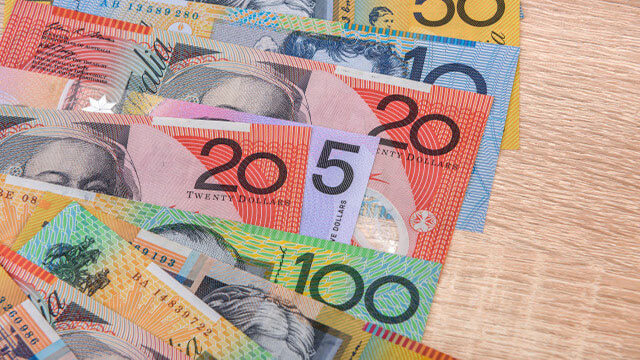
 854
854
Australian Dollar Faces Pressure Amid Weak Chinese Data and U.S. Rate Cut Speculations
The Australian Dollar (AUD) has recently seen a decline following disappointing economic data from China, which raises concerns about the economic outlook for the region. As China remains one of Australia’s largest trading partners, the weakness in Chinese economic indicators has the potential to significantly affect the Australian market. Despite this downturn, the AUD may find some support due to the Reserve Bank of Australia’s (RBA) assertive stance on monetary policy.
Meanwhile, the U.S. dollar (USD) is under pressure as speculation mounts surrounding a potential significant rate cut by the Federal Reserve. The AUD/USD exchange rate has adjusted, showing signs of retracement from its previous gains. Current market indicators suggest a heightened probability of a substantial rate cut by the Fed, with expectations of a 50 basis point reduction increasing from 50% to 62% recently.
In the domestic market, consumer sentiment in Australia is showing slight improvements, as reflected in the ANZ-Roy Morgan Consumer Confidence index, which has risen, although it remains within a pessimistic framework. In the U.S., consumer sentiment is also on an upswing, with the University of Michigan’s Consumer Sentiment Index surpassing expectations, indicating a more optimistic view among consumers regarding the U.S. economy.
China’s economic performance in August demonstrated significant challenges, including a slowdown in industrial activity and declining real estate prices. Retail sales increased by only 2.1%, falling short of predictions, and suggesting a need for the Chinese government to stimulate growth through increased spending.
Further complicating the economic landscape, the U.S. Producer Price Index (PPI) showed an uptick, exceeding forecasts, while Australia’s consumer inflation expectations eased slightly, indicating ongoing efforts from the RBA to manage inflation without hindering job growth.
As the AUD/USD pair fluctuates around 0.6750, analysts note the potential for an upward trajectory should it surpass key resistance levels. Conversely, if the pair declines, immediate support is likely at 0.6719, with further levels of possible support identified within its broader descending channel. A shift in momentum could signal a reversal, leading the pair to explore higher resistance near its seven-month peak.














